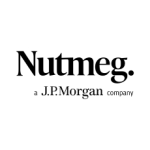Interest rates and inflation latest – Where do we go from here?
With the headline rate of inflation at its lowest level for five years, this should translate to happier times for both savers and investors. Unfortunately, whether you are taking a short term view, or perhaps looking to the longer term in the hunt for higher returns, trying to factor in the relationship between inflation and interest rates continues to create a real headache for all concerned – we therefore take a look at the latest developments to see if any lessons can be learnt. We also review the current range of savings rates on offer as well as reveal some of the more recent trends we are seeing.
Inflation latest
Earlier this month the headline rate of UK inflation, as measured by the Consumer Price Index (CPI), fell to 1.2% for the year to September 2014, according to the latest figures from the Office of National Statistics (ONS). The fall was larger than expected and came as a surprise to many economists who were expecting a smaller reduction.
This sizeable fall of 0.3% on the previous month also means that CPI inflation is now at a five year low and well below the Bank of England target of 2%. In fact, with the exception of September 2009 at the height of the financial crisis when it stood at 1.1%, the current rate is the lowest we have seen for a decade.
What might happen to inflation?
The ONS figures show the weaker inflation recorded in September was a continuation of the trend over the last few months where we have seen falling food and energy prices. Despite a reduction in commodity prices and a strong pound also pushing the headline rate of inflation down, the consensus views seems to be that a period of deflation is not imminent and that inflation should close around 1.4% at the end of 2015 and possibly up to 2% by the end of 2016.
And yet with every inflation report and latest economic data, there are always warnings over potential inflation risk but perhaps a view which should be heard is that of former Bank of England Monetary Policy Committee (MPC) member Andrew Sentance who has said there are parallels between the prevailing economic conditions and those which led to a period in the 1980’s when inflation rose to 10% and interest hit 15%. These ‘conditions’ include low headline inflation, a strong pound, a benign oil price environment, structural change in the financial sector and spare capacity in the economy – perhaps we should at least take note of the possibility of inflation rising quicker than expected.
Interest rate latest
Earlier this month the MPC voted to hold the base rate at a record low of 0.5% for the 67th consecutive month. The minutes of the meeting revealed last week that the committee voted 7-2 and for the third month in a row, Ian McCafferty and Martin Weale remained the only two members to vote for an increase to the base rate to 0.75%. They felt low inflation had been led by lower import and commodity prices, while also noting a fall in unemployment and a tightening labour market and that “based on such economic evidence, monetary policy could be expected to operate only with a lag, so it was desirable to anticipate labour market pressures by raising the bank rate in advance of them.”
The committee concluded though that inflation, at its five year record low, was not strong enough to warrant an increase in interest rates. Certainly then it would seem inflation is under control in the short term and yet although this is good news for many in that the cost of living is low and relatively under control, this could also result in interest rates remaining lower for longer.
Rate rise on the horizon
But with the economic indicators coming from the Euro-zone pointing to a period of risk and uncertainty, it is increasingly unlikely that the Bank of England will raise interest rates in the coming months and almost certainly not this year. The consensus is that an interest rate rise is still on the cards for 2015 and that the middle of next year is most likely.
This view is also shared by head of UK equities at Old Mutual Global Investors, Richard Buxton, who says he does not expect the Bank of England to hike interest rates before the 2015 general election in May: “Whilst we are deleveraging steadily as a consumer society there is still a lot of debt out there and there’s still a lot of people with very high loan-to-value mortgages. Even at today’s level of interest and mortgage rates, making those mortgage payments is still taking up a lot of their disposable income.”
Where might interest rates go from here?
Mr. Buxton also stated the Bank would not look to raise rates until it saw inflation in wages which would not happen until the middle of next year at the earliest, adding that he thought the Bank would initially raise the interest rate by 0.25% and then monitor the impact for several months just to see the impact on bills and consumption rates and on the housing market. He concluded that it would be many years before rates reach 3%.
Current savings rates
In summary, inflation is at a five year low with the prospect of remaining low, at least in the short term, whilst interest rates are looking unlikely to change in the near future. On the basis that interest rates on savings are closely aligned with the Bank of England’s base rate, this is a key consideration for all of us and whilst the appetite for cash from banks remains at its lowest level, it is reasonable to assume that we are unlikely to see any real shake up in savings rates in at least the next 12 months.
Whatever happens to future interest rates, with inflation currently running at 1.2%, basic rate tax payers need to achieve 1.5% per annum to match inflation whilst higher rate tax payers need to achieve 2%. A review of the market shows that current savings rates are offering around 1.5% on instant access, 1.9% and 2.3% for one and two year fixed rates respectively, around 2.5% for a three year fixed rate and 3.1% if you fix for five years.
Recent trends
This means that most accounts will now offer to at least match the current rate of inflation, but is this good value for money? Should we looking to match inflation or offer a hedge against any increase to inflation? Should inflation rise to 2% in the next couple of years, you would need to have tied your money up for at least three years just to break even.
The interaction between inflation and interest rates, and how this might affect savings rates in the future and your net return (after tax) is of course something to consider very carefully. There is also the use of the ISA allowance to throw into the mix although this only works for tax payers and provided the rate is not lower than the equivalent non-ISA product after tax. One realisation that has clearly emerged in recent years is that savings rates are unlikely to get anywhere near where they used to be. To this end, these ongoing economic conditions have produced a number of trends.
Don’t fall into the instant access trap
Fixed rate bonds, the traditional mainstay for many savers’ portfolios, are at record lows. The latest crop of fixed rates on offer means that many maturing bond holders are continuing to see falls in income of up to half when compared to the rates currently available on a bond with the same duration.
This has created a trend of maturing fixed rate bondholders moving away from medium to longer term fixed rates in favour of instant access accounts on the basis that something will happen relatively soon which will then spur them on to taking further action. Although understandable, there is currently little or no prospect of any real growth on your capital and should inflation move upwards, this could prove to be precarious strategy.
New ISAs act as a catalyst
A welcome change that occurred earlier this year was the enhancements to the ISA rules. Since 1st July, the New ISA allowance is now £15,000 and all of this can be held in a Cash ISA whereas before you could only hold half of the annual allowance. The good news is that the increased allowance has given many the much needed nudge to review their existing ISAs as well as consider options for any new ISA money.
Unfortunately there have also been signs that Cash ISA rates, particular fixed rates, have been falling even faster than their non-ISA counterparts. However, another change implemented was the greater freedom to transfer between Cash ISA and Stocks & Shares ISAs and vice versa, and with the whole amount permitted to be held in either type, there are opportunities that have not been available previously.
Savers looking to investments
Whilst interest rates remain low and an increasing number start to feel the impact of receiving far less income than they may have enjoyed in recent years, particularly those previously reliant on fixed rate bonds, another trend we are seeing is savers starting to consider investing some of their capital. This raises the difficult question of taking on more risk in an attempt to replicate historical levels of income and to try and combat the possibility of rising inflation.
However, the ISA is again very well placed to offer a possible solution and this perhaps helps to explain why there have been record inflows into Investment ISAs in the last year. This is where the tax free status of an ISA can prove particularly attractive to those looking to supplement their income with a regular stream of tax free income and the increased transfer flexibility here is an option many are considering. In this context it is perhaps not surprising why our best selling investment is a fixed income plan.
Find out more about our best selling fixed income investment »
A middle ground
Finally, another trend we have seen with those looking to try and increase their overall returns is the use of alternatives to the traditional instant access and fixed rate savings products – structure deposits. These plans include full FSCS protection as with any other bank deposit but sacrifice a guaranteed return for the potential to produce a higher return, which is usually dependent on the performance of the stock market – often the FTSE 100 Index.
The main difference to note is that the returns are not guaranteed and for this reason, they are not for everyone and are unlikely to be the home for your entire savings pot. However, they do offer the potential for higher returns and with the current outlook for savers looking set to throw even more challenges could be a worthwhile and timely consideration.
Compare alternatives to fixed rate bonds »
Whatever you do, don’t delay
There is currently a fine line between the variable and fixed savings rates on offer and the headline rate of inflation. On the basis that this is delicately balanced at the best of times, diversifying savings portfolios to include a wider range of options could offer a route to providing the level of returns savers need over the longer term.
Ultimately, which option or blend of deposits, structured deposits and investments will depend entirely on your individual circumstances however, these remain challenging times and traditional savings accounts are currently falling short of meeting the pressures put on saver’s capital by the continuing economic situation. With many still failing to make use of their tax-efficient ISA allowance, money is being lost by paying tax unnecessarily. Combine this with record low savings rates looking set to continue and the uncertainty around inflation, and now is the time to take action.
Compare instant access savings »
Compare alternatives to fixed rate savings »
Compare fixed income investments »
No news, feature article or comment should be seen as a personal recommendation to invest. Prior to making any decision to invest, you should ensure that you are familiar with the risks associated with a particular investment. If you are at all unsure of the suitability of a particular investment, both in respect of its objectives and its risk profile, you should seek professional advice. Tax treatment of ISAs depends on your individual circumstances and is based on current law which may be subject to change in the future. Always remember to check whether any charges apply before transferring or switching an ISA.
Structured deposit plans are capital protected. There is a risk that the company backing the plan or any company associated with the plan may be unable to repay your initial investment and any returns stated. In this event you may be entitled to compensation from the Financial Services Compensation Scheme (FSCS), depending on your individual circumstances. In addition, you may not get back the full amount of your initial investment if the plan is not held for the full term. The past performance of the FTSE 100 Index is not a guide to its future performance.
The fixed income investment mentioned is a structured investment plan that is not capital protected and is not covered by the Financial Services Compensation Scheme (FSCS) for default alone. There is a risk of losing some or all of your initial investment. There is a risk that the company backing the plan or any company associated with the plan may be unable to repay your initial investment and any returns stated. In addition, you may not get back the full amount of your initial investment if the plan is not held for the full term. The past performance of the FTSE 100 Index is not a guide to its future performance.
Tags





